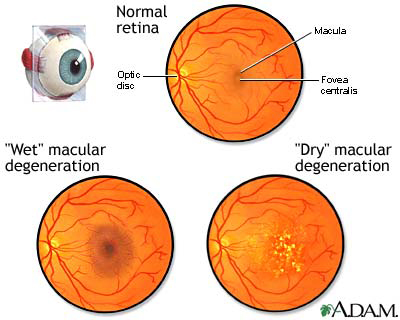
The retina is a thin tissue that lines the inside wall of the eye. The macula is a geographic area within the retina that is responsible for sharp central vision. In 10-15% of cases, bleeding can occur into the retina (“wet” AMD), which can result in sudden central vision loss and scarring. In the more common “dry” type of macular degeneration, which affects 85-90% of cases, central vision loss may occur without bleeding, but usually occurs gradually. Dry AMD can lead to wet AMD at any stage, or can progress to advanced dry AMD.
Most cases of macular degeneration, if detected early, can be successfully controlled, provided the patient is compliant with using their medication and returning for regular monitoring and follow-up care.
Your optometrist may give you a grid pattern (Amsler grid – see below) for regular home monitoring, to detect any distortions or dim areas in your vision which may indicate progression of the disease. If changes occur, you should see your optometrist
It is important to detect AMD at an early stage in order to take appropriate measures to treat (wet AMD) or help prevent progression of dry AMD to wet AMD or advanced dry AMD.
Back